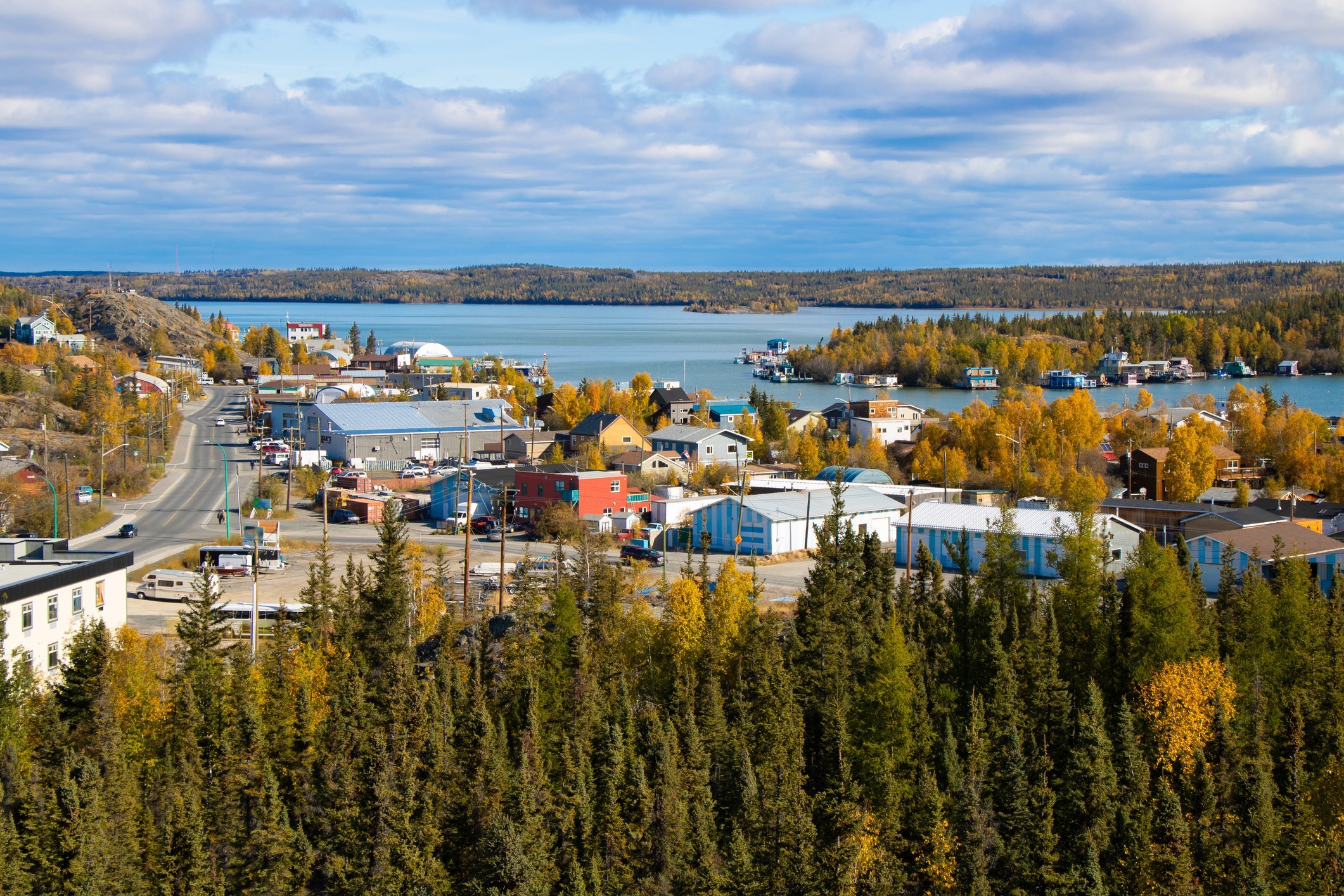
Peace and quiet, proximity to nature and close-knit communities are some of the major draws for those who choose to live rurally in Canada.
However, some people who relocate to smaller towns experience challenges such as limited access to amenities and services, isolation, loneliness and varying environmental conditions. These and other factors are important things to consider before making the choice to leave the city.
Buying a rural home
In general, house prices in rural Canadian areas tend to be cheaper than in cities.
Land generally costs less, demand is lower and construction labour is often cheaper, resulting in lower real estate prices. When you buy a rural home, the plot of land is often larger.
The downside of owning a rural home is there are often added expenses, such as high transportation costs. Usually rural lifestyles involve a lot more driving, especially because public transit is limited and sometimes non-existent. Utility costs may be higher due to longer distances from infrastructure.
Rural employment

Finding a job is more of a challenge in rural areas because there are less businesses and institutions operating close by, resulting in many residents having to commute far distances to get to work everyday.
There are some in-person employment options such as working in restaurants, the post office, gas stations, hardware stores, farmer supply businesses, libraries, health clinics etc. Often regional community councils have job openings.
Many people choose to offer their professional skills to smaller communities. Healthcare practitioners such as doctors, dentists, massage therapists, acupuncturists and counsellors, etc can open up home studios and offices. These health care businesses have the advantage of working in a small community where they can develop in-depth relationships with each individual client resulting in more effective treatment. The downside is that smaller populations can result in a lower client load.
Of course, the trades are always in high demand in rural communities. The downside of working in a trade rurally is that tools, hardware and equipment can be harder to come by, resulting in more trips to nearby towns or cities, and an increase in supply orders.
Seasonal farm labour employs many rural Canadians. It is physically demanding but rewarding. Many people benefit from being outside all day and keeping the body moving. An added bonus is that often farm workers get free or discounted food products from their place of employment.
Artists and craftspeople are often drawn to rural areas as the natural surroundings and quiet lifestyle contribute to the creative process. Artists can open home galleries or sell their work at local farmer’s markets.
Global internet providers such as Starlink have changed the landscape of remote work. High-speed internet can now be made available almost everywhere, and those who rely on fast wifi speeds can choose to live in the most rural of communities.
Amenities

Easy access to rural amenities really depends on the size of the town or village. If you choose to live right in a small town, amenities such as hospitals, doctors offices, vet offices, post offices, grocery stores, mechanics, hardware stores and restaurants can be accessed easily.
Furthermore, online ordering has made it easy for small town residents to purchase whatever they need and have it delivered to them.
If you choose to live outside of a town, especially in an unincorporated community or up an FSR (forest service road), you will have more privacy. You will also have to rely on driving (sometimes significant distances) to access amenities. The downsides are higher fuel costs per month as well as more wear and tear on your vehicle.
In the event of an emergency, police and medical response times can sometimes take up to an hour.
This could be problematic especially for seniors who choose to live outside of town and are more prone to accidents and health emergencies.
Some rural communities have to drive 3-4 hours to get to an international airport. The upside is that the area is harder for visitors to get to, so there are less tourists from far away during the high season. The downside is that people who travel often for work are limited by distance and time. Furthermore, smaller airports have fewer flight times and destinations, and the flights they do have are more costly as it’s almost guaranteed that your trip will have a layover at a larger airport.
Community, culture and social life

Many people enjoy the tight-knit community spirit of small towns and rural regions. Often people who choose to live rurally have shared values such as a deep love for nature and outdoor activities.
Relationships are interconnected like a big family. Residents can foster a strong support network and community members take responsibility for others in ways such as checking in regularly on seniors who live alone, creating meal trains for mothers with newborns, and taking turns sharing childcare responsibilities. Celebrations and gatherings are often more intimate as community members gather together year after year.
The culture of rural Canadian towns consists of First Nations communities, farmers, blue collar workers like tradespeople, outdoor enthusiasts, artists and creative types, etc.
Rural towns have very little international diversity so if you prefer places where you can regularly interact with people from faraway cultures, and enjoy music and authentic international cuisine, you are better off staying closer to a city.
Social events in rural areas include farmers markets, events at community halls, potlucks and sports activities. Community centres generally offer activities such as arts and crafts and skills building courses. Outdoor enthusiasts organise walking groups and team sports. The plus side of socialising in a small community is you will generally know at least a few people in the crowd. This can also be a downside - there is almost no anonymity at small-town events.
The downside of rural socialising is that activities and entertainment can be very limited. Unlike in the city, there isn’t a plethora of concerts, comedy shows, art openings and sports events to choose from.
Many people move to small towns and experience culture shock, loneliness and isolation. It takes more effort to create a circle of friends and for certain people this can be a real challenge. It’s best to consider how you can cope with the lonely period of moving to a new town before taking the leap.
First Nations Gatherings

Rural First nations communities hold potlatches and pow wows. A potlatch is a traditional ceremony held by indigenous communities of the Pacific Northwest, where gift-giving, feasting and ceremonial songs and dances are shared. Potlatches serve as a social and cultural gathering to mark significant events or occasions.
A pow wow is an Indigenous gathering where communities come together to dance, drum, and sing, and share their culture in a celebration of heritage and spirituality.
Non-indigenous people are welcome to attend potlatches and pow wows if they are invited. By attending these celebrations, cultural appreciation, education and community building can grow. Residents of Canada have a responsibility to foster greater understanding and respect for Indigenous peoples and their cultures.
Safety and Environment

In general there is less crime in rural communities, which is a positive. However, as mentioned before, emergency response is often slower in rural areas, depending on where the police stations, fire stations and hospitals are located.
Some Canadian communities still don’t have cell service. This is challenging in the event of vehicle breakdowns, hiking mishaps and other remote emergencies away from home.
One of the main benefits of living rurally is the peace and quiet of natural surroundings. Privacy and solitude are added bonuses. For some, rural living can be lonely and isolating. Rural living isn’t for everyone and seems to be more suitable for introverted types.
While natural surroundings are beautiful, they can also be less safe environmentally. Disasters such as floods and forest fires are more common, as are accidents such as falling trees and sliding on icy highways. With the exception of small coastal islands, most of rural Canada has predators such as bears and cougars. Living in close proximity to nature requires foresight, adequate preparation and wilderness knowledge.
Rural living: is it the right choice for you?
Rural living in Canada offers valuable benefits such as peaceful surroundings, natural beauty and community connection. However, this lifestyle comes with distinct challenges. Limited access to amenities, potential isolation and environmental risks are things to consider when choosing where to live. Ultimately, every location comes with different types of challenges. For those who value tranquillity, community strength and a deep connection to nature, rural living can offer a fulfilling lifestyle in the beauty of Canada’s countryside.
If you are planning to move to a rural area of Canada, Top Move can help you find the best moving company to meet your individual needs.
What do our customers say?




























